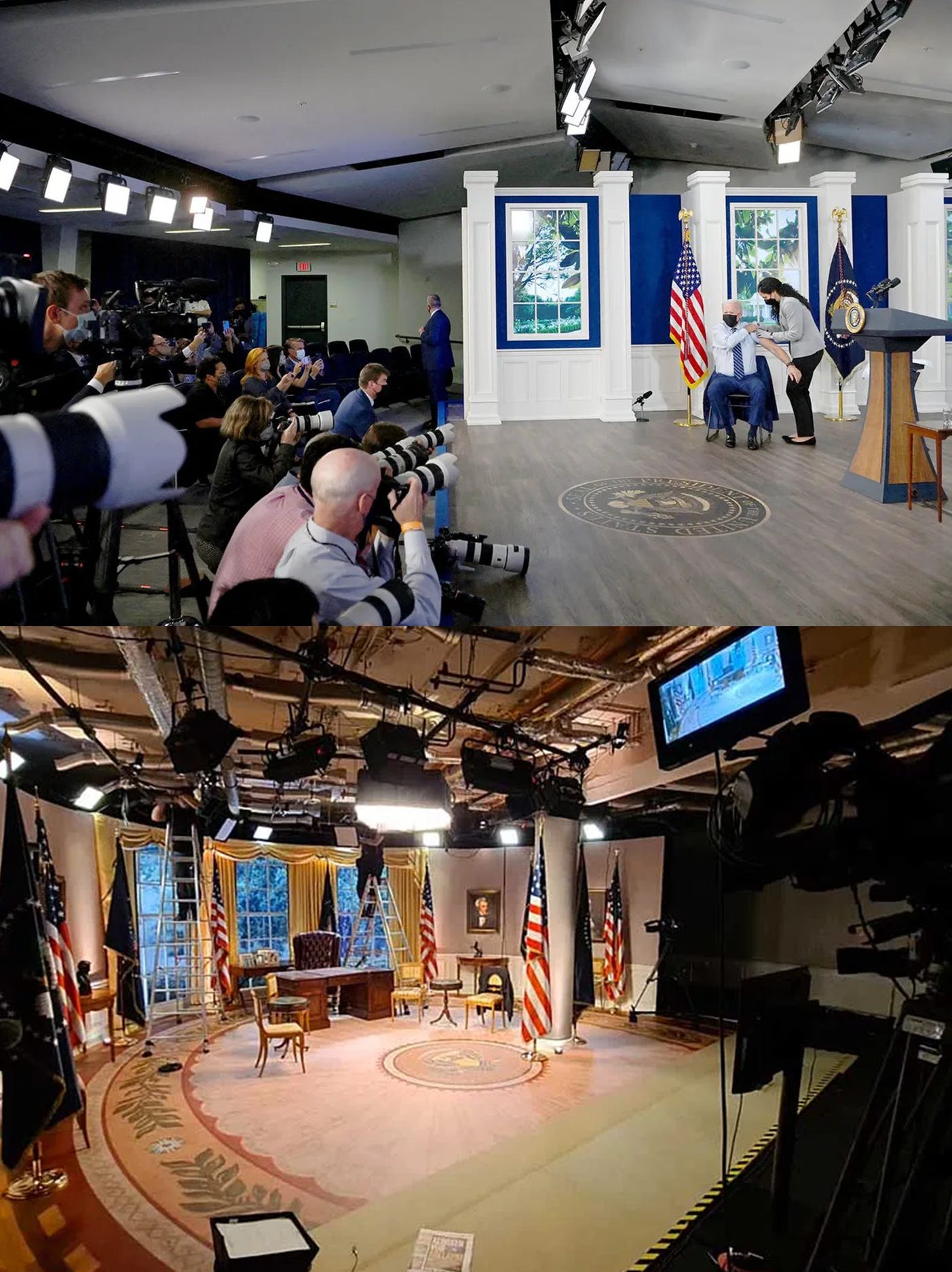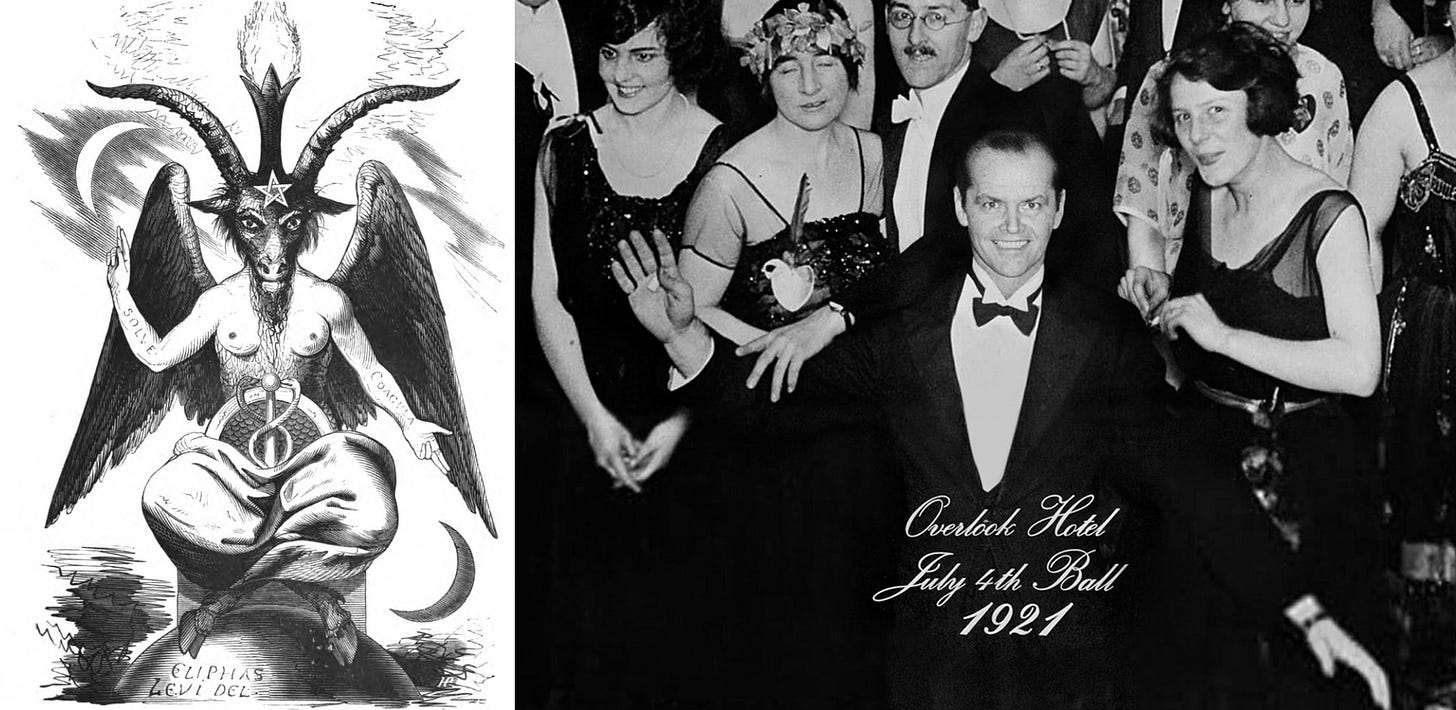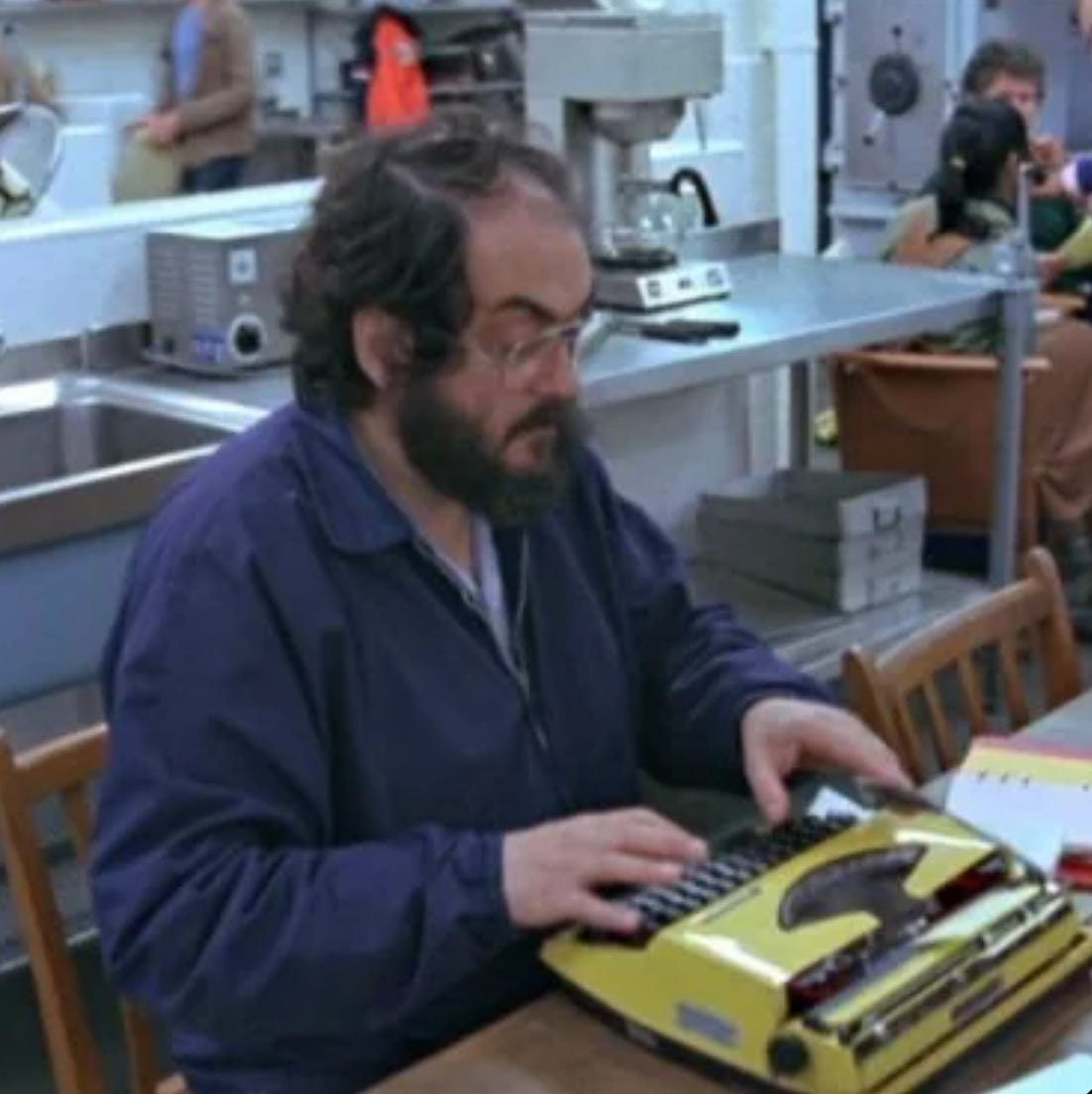Welcome back weary traveller.
Assuming you’ve read Chapter One already, for this Chapter we’ll waste no time and immediately blast off to another movie from Kubrick for the potential signs and clues I spoke about in the last.
In 1980 Kubrick released the magnificent horror film masterpiece ‘The Shining’ based on the novel from Stephen King (who hated it).
A mind-bending ride of a movie of which many a thesis can be, and have been, written as to the underlying themes and messages within. Documentaries of course exist too. One I’d recommend is ‘Room 237’ (2012) which includes the main idea I’m laying out here - that he specifically wanted to hide in plain sight clues of his potential involvement in helping create a Great Space Hoax in addition to the other themes and messages he might have been trying to convey.
Now this isn’t going to be a definitive list of examples to back up the claim that goes against The Official Sources™️ because honestly that would probably overwhelm most of today’s attention spans. But these are, in my opinion, some compelling aspects worth highlighting including my thoughts and analysis of them…so get ready for spoilers if you’ve not watched the movie yet (and correct that asap)!
1. The Impossible Window & Hotel Manager
There is a curious part of the movie that fans have discussed in great detail for some time now. It’s regarding the window in ‘Overlook Hotel’ manager Stuart Ullman’s office, which is an example of a spatial impossibility. Essentially the window should be showing a wall behind it (so somewhat pointless), but rather strangely shows natural light and trees as though it’s peering outside (like most windows).
…now some might say it’s just a continuity error, especially as you can actually see Kubrick himself in the reflection briefly as he follows Jack Nicholson in his role of Jack Torrance:
…but even that, I’m not sure was a mistake. Maybe he wanted you to see a reflection of himself in front of Jack. A blink-and-you-miss-it break from the illusion. Maybe he was saying he is Jack. A man with a terrible secret and plagued by demons.
(it’s worth noting that there are other instances of “errors” like this which help add to the creepy vibe of the movie and have you always unsure as to what is reality or not…those who worked on the movie allegedly say they were on purpose)
The specific element of this which I can see potentially having a Moon nod is that Kubricks’ affable, charismatic version of Ullman (very different to the “officious little prick” character in the book), to me, is John F. Kennedy. The President who in the early 1960’s urged they go there, but wasn’t President in 1969. Ullman makes a deal with Jack and then leaves and isn’t “in charge” for the main event that unfolds after. Some theorise Ullman represents America or the US Government in general, which of course could be the case/still makes essentially the same kind of point. But I think it could be even more literal than that. Just look at the similarities:
…and maybe, just maybe, Kubrick was making a comment about the White House/Oval Office/Presidency (and Politics & Media) in general. He could have been hinting at the tricks they could sometimes be playing for the cameras with his inclusion of the Impossible Window:
Now, wouldn’t that be something? 😉
that’s show business folks!
2. Native American Motif
At one point Jack is seen throwing a Tennis Ball against the wall bouncing it off a Native American motif that resembles rockets taking off:
A bit of a stretch perhaps. Though he does look to be rather forcefully hurling the ball at it. Almost like it’s a guilty conscience? Remember earlier I said Jack might be Kubrick in this movie…
3. Tang
There are a few notable times where ‘Tang’ is displayed in the movie right in shot with the camera focused on the main subject for the scene:
…and it’s theorised this specific product was included due to its NASA connection and being used on the Apollo missions.
Although this one might seem like a stretch as well the cans are seen several times with their big bold writing hard to miss and therefore rivalling the most blatant of “Product Placement” activities you’ll see in Music Videos, TV Shows and the like.
4. Eagle
The movie also features a lot of Eagle imagery, for example one is sat behind Stuart Ullman in his (Oval?) Office - as can be seen above next to Kubrick’s reflection circled in red. Obviously this has American ties to it or could also/actually be a reference to the ‘Third Reich’ (given the many themes of genocides and wars that also seem to be being referenced in the movie) with the English translation of ‘Adler’ (the brand of German typewriter Jack uses) translating into “eagle” (hence its logo which becomes obvious as to where the belief of a connection to the Nazis might originate).
But the Moon significance is that Eagle, of course, was the name of the Apollo 11 Lunar Module…any of this stuff landed with you yet? 😁
Oh and the model of the typewriter in the movie (a ‘Universal 39’) just so happens to be one from the 1960’s. Likely the specific design released in 1968. The same year ‘2001: A Space Odyssey’ was released as mentioned in the Previous Chapter.
It’s worth noting the typewriter mysteriously is bluish grey in other scenes…
…you might say, a Lunar looking White and then a Lunar looking Blue?
Which reminds me of depictions of Baphomet pointing at light and dark crescent Moons…which is the same pose “Jack” is shown doing in the final revelation of the movie:
as above, so below
Oh and just so you know, Kubrick used a 1969 Adler ‘Tippa S’ typewriter on set:
…just another random coincidence I’m sure!
Speaking of the typewriters; the famous line repeated over and over to indicate the madness (or dark forces) consuming Jack, some believe is to be read differently. The ‘All’ looks an awful lot like A11 - as in Apollo 11. Judge for yourselves:
apollo 11 work and no play makes jack a dull boy
And believe it not, but we haven’t even gotten to the really good stuff yet.
















